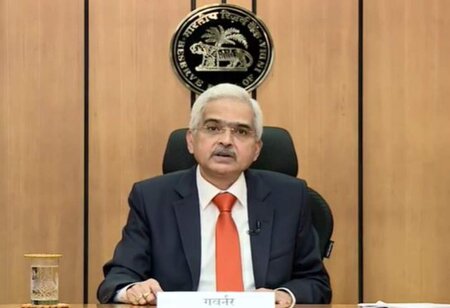RBI announces new series of measures with an intent to help businesses beat second wave blues
 The central bank Governor Shakti anta Das Wednesday announced a series of measures - from additional loans for enhancing healthcare capacity to dedicated MSME relief packages - to help vulnerable businesses ride out the impact of localized mobility and operational curbs enforced to contain the second covid wave.
The central bank Governor Shakti anta Das Wednesday announced a series of measures - from additional loans for enhancing healthcare capacity to dedicated MSME relief packages - to help vulnerable businesses ride out the impact of localized mobility and operational curbs enforced to contain the second covid wave.
Governor Das announced emergency liquidity support of Rs 50,000 crore, with a three-year window, for health services. The window will be open until March 2022, and classified under priority-sector lending until repayment or maturity. Banks can park an equal amount of such covid loans with the Reserve Bank of India (RBI) under reverse repo rate, which would be 40 basis points higher than the reverse repo. The reverse repo rate is currently at 3.35%.
“In the fight against the second wave, alleviating constraints from the financing side for all stakeholders – the government, hospitals, vaccine manufacturers, medical oxygen suppliers and, above all, the common man who may be facing a sudden spike in health expenditure – requires a comprehensive targeted policy response,” Das said. “Small businesses and financial entities at the grassroots level are bearing the biggest brunt of the second wave of infections.”
Under the plan, banks can provide fresh lending support to a wide range of entities including vaccine manufacturers, hospitals, pathology labs, manufactures and suppliers of oxygen and ventilators.
The inflation trajectory over the rest of the year will be shaped by the covid infections and the impact of localised containment measures on supply chains and logistics
“The RBI governor has taken the financial sector battle against covid 2.0 head on with a clear focus on protecting lives and livelihoods,” said Uday Kotak, President of the Confederation of Indian Industry (CII) and Managing Director of Kotak Mahindra Bank. “CII welcomes the support to individual and MSME borrowers and ease of banking through digital means. The steps taken to expand the RBI balance sheet are needed and welcome.”
Small businesses and retail borrowers got special focus from the regulator in this latest round of Covid relief measures. The RBI announced the resolution framework 2.0 for loans with exposure of less than Rs 25 crore that have not availed restructuring under the earlier framework and was classified as standard loans at the end of March 31.
This restructuring window will be open until September 2020. The RBI also announced targeted long-term repo operations for Small Finance Banks of up to Rs 10,000 crore, for fresh lending of Rs 10 lakh per borrower.
The governor also announced that the second purchase of government securities through its new secondary market bond acquisition program will be conducted on May 20 for a total amount of Rs 35,000 crore. With system liquidity assured, the RBI is harnessing its liquidity operations to support growth impulses, especially at the grassroots level.
On the impact of the second covid wave, Das said that while lead indicators suggested that the damage to businesses was minimal, it would continue to monitor the on-ground developments.
“Aggregate demand conditions, particularly in contact-intensive services, are likely to see a temporary dip, depending on how the covid situation unfolds,” the governor said. “With restrictions and containment measures being localised and targeted, businesses and households are learning to adapt. Consequently, the dent to aggregate demand is expected to be moderate in comparison to a year ago. Reports suggest that the disruption in manufacturing units so far is minimal.”
RBI data showed that consumption demand was holding up, with sales of consumer goods rising in double digits in the March quarter and average daily electricity generation up by 40% in April over last year. Rail freight also registered growth of over 76% in April. Toll collections in April suggested that mobility had declined, although the impact wasn’t as severe as in April 2020, it said.
“The amounts involved are not very large, and some might even add that he sounded more upbeat regarding the situation than is warranted,” said Alok Sheel - RBI chair professor in macroeconomics at the Indian Council for Research in International Economic Relations (ICRIER). “He has nevertheless indicated that RBI is keeping a close watch on the situation and would come up with additional measures, including unconventional, should the situation so require.”
The inflation trajectory so far has remained elevated with CPI inflation edging up to 5.5% in March 2021 on the back of a pick-up in both food and fuel prices. Although the forecast of a normal monsoon should help contain food price pressures, higher input costs across sectors remain a concern, Das noted.
“The inflation trajectory over the rest of the year will be shaped by the covid infections and the impact of localised containment measures on supply chains and logistics,” Das said.




